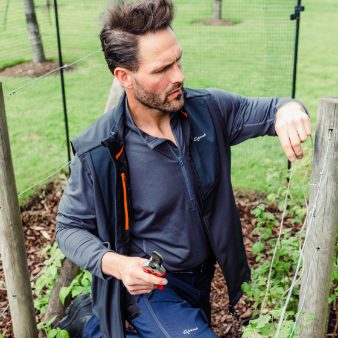Garden trends - natural swimming ponds

With our summers getting hotter, a dip in your own beautiful and chemical free-swimming pond is becoming an increasingly popular idea.
Unlike bright blue, artificial looking rectangular shaped traditional swimming pools, natural swimming pools blend more harmoniously into the landscape. The shape of these pools can be formal and square or a more organic shape and they’re surrounded by aquatic plants that attract dragonflies, damselflies, frogs, birds and insects. It’s more like swimming in a large pond, but without the mud at the bottom.
The pools have two separate sections, one deeper, lined and reinforced area for swimming, and a shallow shelf around the pond for the filtration system made up of marginal plants. This is separated from the pool by a barrier such as a band of stone, to prevent roots and soil spilling into pool. The plants help keep the water clear mainly by removing the nutrients from the water to prevent algae growing. (Ducks and fish aren’t allowed as they’ll boost the nutrient levels.)
These plants include submerged oxygenating plants as well marginals, bog plants and floating plants. The amount of surrounding planting and style of this depends on the look you’re trying to achieve, but the more you use, especially British natives, the more likely it is you’ll attract wildlife. Wands of airy purple Lythrum salicaria look wonderful and are a magnet for bees and butterflies; reeds, iris and waterlilies are other options. The greener the plants grow the more nutrients they absorb on the whole. Mechanical pumps are also used to circulate water and a skimmer to clean the surface.
With no chlorine or chemicals, these ponds are healthier to swim in and better for the environment as well as being easier to maintain than conventional pools because they don’t have to be drained or covered in winter. And for a final touch, add a little jetty to sit and watch the wildlife or dangle your legs into the water. Dreamy!







